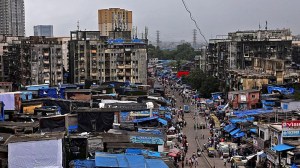Click here to follow Screen Digital on YouTube and stay updated with the latest from the world of cinema.
Indian documentary Writing with Fire enters Oscars 2022 shortlist
After a year-long journey since the 2021 Sundance Film Festival, and 28 international awards later, the documentary feature Writing with Fire, which spotlights a Dalit women-run newspaper and maps its print-to-digital transition, is headed to the 94th Academy Awards in February.
 Writing with Fire has scored a nomination at the 94th Academy Awards.
Writing with Fire has scored a nomination at the 94th Academy Awards.As India’s official entry PS Vinothraj’s Tamil debut feature drama Koozhangal (Pebbles) bows out of the Oscars race, Delhi-based filmmakers Rintu Thomas and Sushmit Ghosh-directed documentary Writing With Fire has made it to the shortlist, among 15 films. Selected from a pool of 138 films, it will advance to the next stage, in the Documentary Feature category, of the 94th Academy Awards. The category’s shortlist includes Ascension, Procession, Summer of Soul (…Or, When the Revolution Could Not be Televised), The Velvet Underground, among others. The nominations’ voting will begin on January 27 and results will be announced on February 8. The award ceremony will be held on March 27 in Los Angeles.
Realised by the duo’s production house Black Ticket Films, the documentary feature began grabbing eyeballs since it won Special Jury (Impact for Change) and Audience awards at the Sundance Film Festival in January. And since has picked up 28 international awards till date, including at the US’ San Francisco Film Festival, BlackStar Film Festival, and Telluride Mountainfilm Festival, Indo-German Filmweek, Japan’s Yamagata International Documentary Film Festival, France’s International Human Rights Film Festival, Spain’s Valladolid International Film Festival, Norway’s Nordic Docs, IDFA Amsterdam.
The Hollywood Reporter calls the film “insightful and inspirational”, Variety magazine said, “Thomas and Ghosh have found their angle, and it’s a powerful one, and “The story of a newspaper… and of India, in a time of seismic change”, as The Washington Post called it “The most inspiring journalism movie – maybe ever”.
“As filmmakers, Rintu and I have always been interested in amplifying stories of resilience and hope. Writing With Fire has had a wonderful journey this year and it’s heartening to see a film from India being cherished by audiences across the globe — the Academy shortlist is icing on the cake,” said Ghosh, who’d earlier won the National Award for the Best Agriculture Film for Timbaktu in 2012.
Thomas tweeted earlier in the day, “What a moment for the Indian documentary community. We are richer with the stories we choose to tell,” and Black Ticket Films tweeted, “Six years back we took off on an unknown journey and here we are.”
Their debut feature documentary spotlights Khabar Lahariya, which started as a social experiment by an NGO. It is India’s only and first-of-its-kind rural newspaper run by Dalit women since 2002, started by Delhi-based NGO Nirantar from Chitrakoot in the Bundelkhand region. It is published across Uttar Pradesh and Bihar in rural dialects of Hindi, including Bundeli and Awadhi. What began as a social experiment has evolved into a social necessity today. The film captures Khabar Lahariya’s switch from print to digital in recent years. It follows Meera Devi and her journalists, armed with smartphones and unwavering grit, as they “break traditions on the frontlines of India’s biggest issues and within the confines of their own homes”, questioning patriarchy and redefining power, investigating local police-force incompetence, listening in and standing by victims of caste and gender violence.
#WritingWithFire is on the @TheAcademy Shortlist. What a moment for my entire team behind this indie Indian doc. What a moment for the Indian documentary community. We are richer with the stories we choose to tell, big love @KhabarLahariya 💜💜 https://t.co/CLHSqF3Gxn pic.twitter.com/CRPIej1k4R
— Rintu Thomas (@RintuThomas11) December 22, 2021
“If we don’t adapt, we don’t survive,” says Meera, in the film’s trailer. Another scribe says, she becomes upper-caste Brahmin, when required, in a world where women reporters, especially if they are Dalit, are told by male respondents to “speak within their limits”. There’s a fine blend of presence of mind, street-smartness, humour and compassion in handling grave matters by these women who brave myriad odds and risks.
“A Dalit woman as a journalist is unimaginable”, Meera echoes a general perception, in the film, but adds that, this group of women has been able to change that perception, to a considerable extent, over the 14 years of their print run. From walking through hardy terrain in search of stories, to speaking to the families of lynched victims of mining mafia, for instance, and with police officers who feign ignorance, to their male family members who question them about returning late from work and not focussing on housework. As Dalits continue to be lynched in India, at the most bizarre of pretexts, from “theft” to “sacrilege”, allegedly, films like this are a need of the hour.
In 2015, an online photo story about Khabar Lahariya led the directors to this group of semi-literate Dalit women journalists “who were reporting, producing, marketing, distributing their own newspaper in rural India, which is unique because that’s a region (Bundelkhand) where journalism is entirely male dominated, and belonging to the dominant caste,” Thomas said to American feminist journalist and political activist Gloria Steinem in an online conversation last week. And that, as non-fiction filmmakers, over the past 10 years, they have naturally gravitated towards “stories of outliers to a system, and who from that space are chipping away at the structures of power in their own unique way”.
Steinem, the voice of America’s women’s liberation movement in the 1960s-’70s, said in the video, there’s a lot the world’s “two biggest, most diverse democracies (the US and India) can learn from each other”, and calling the film — about “real, not concocted life” — “a revelation in all kinds of ways…it makes clear that literacy has been a barrier to journalism for all the time I’ve been alive,” she said. Mentioning how senior journalists train the others “in the art of digital journalism”, by teaching “the English alphabets using Hindi letters”, Ghosh quipped, “this was the first time we were meeting a group of journalists who had not gone to J-school, or not completed their schooling, but their insights and approach to journalism was more sophisticated than most mainstream journalists we know.”


- 01
- 02
- 03
- 04
- 05































